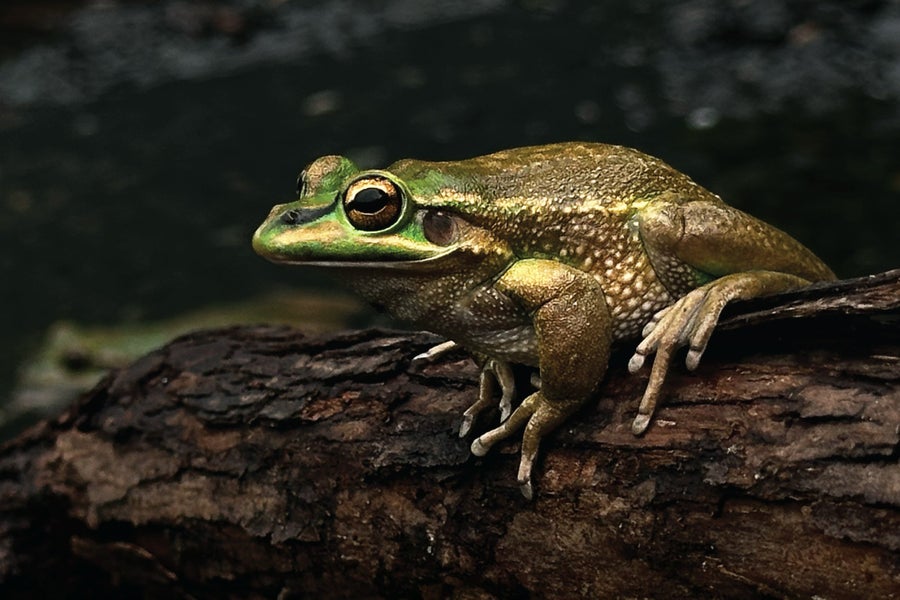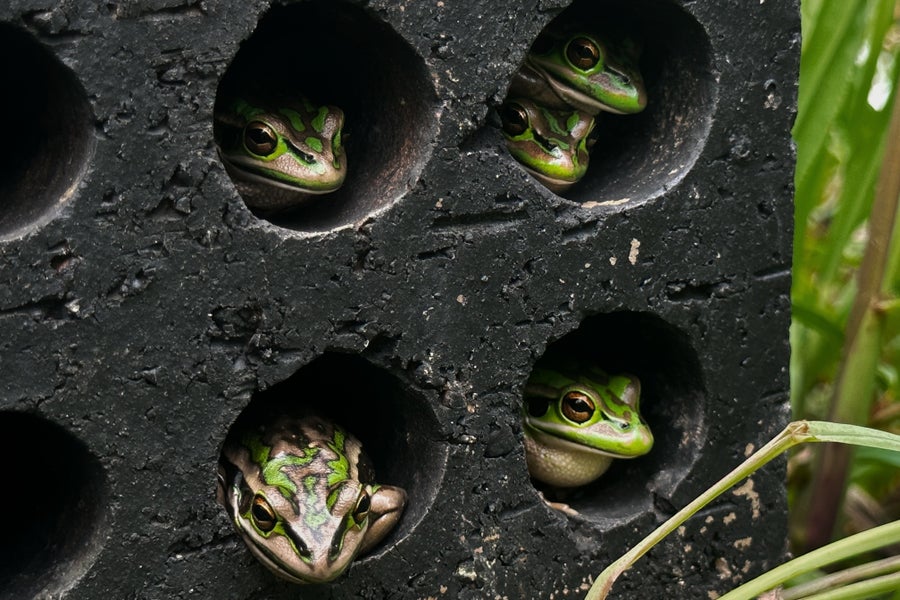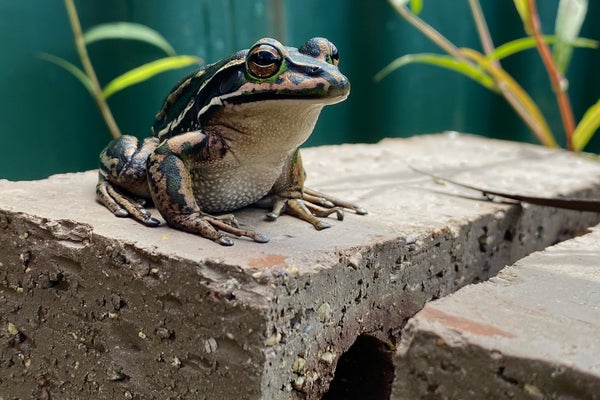The bad news: frogs around the globe are still dying in droves from a nasty fungal infection that penetrates their skin and stops their heart. The good news: scientists now have evidence that offering frogs their own little “sauna” in the winter might help them fend off the disease.
Called chytridiomycosis, or chytrid disease, the illness was first identified a few decades ago. In the short time since, it has killed off at least 90 frog species worldwide and has pushed hundreds of other amphibian species into decline. Scientists have noticed that the infection, caused primarily by the fungus Batrachochytrium dendrobatidis, seems more deadly in cold, wet climates than in warm, dry ones.
Researchers studying chytrid have previously focused on observing the infection and its effects in the wild. For a new study in Nature, scientists took things a bit further: they provided frogs with artificial heat-trapping structures akin to “saunas.”
On supporting science journalism
If you're enjoying this article, consider supporting our award-winning journalism by subscribing. By purchasing a subscription you are helping to ensure the future of impactful stories about the discoveries and ideas shaping our world today.

Anthony Waddle
“It’s an idea that’s been around for a really long time, that if you can create scenarios where there’s warm habitat for frogs, you can protect them from chytrid,” says Anthony Waddle, a conservation biologist at Macquarie University in Australia and a co-author of the new research.
The team focused on an Australian species called the green and golden bell frog (Litoria aurea), which has been hit by population declines and territory shrinkages since chytrid arrived. “It’s a pretty meaty, fat little frog,” Waddle says, noting the appeal of the complex green and gold patterning that inspired the animal’s name. Despite these frogs’ dressy appearance, they aren’t snobs—they’re happy to live anywhere they can alongside humans, making the animals an attractive species for experiments. “They’re really like the pigeons of frogs,” Waddle explains.
In a series of experiments, Waddle and his colleagues found that when the frogs could pick their own temperature-controlled environment, they preferred around 85 degrees Fahrenheit (29 degrees Celsius)—toastier than the temperature range in which chytrid kills most efficiently. The researchers also infected frogs with the fungus, then exposed them to 90-degree-F (32-degree-C) heat; this helped the frogs clear the infection and gave them resistance against future exposure.

Green and golden bell frogs inside a frog sauna thermal shelter.
Anthony Waddle
The study’s main experiment then used little enclosures that included black-brick structures to control the frogs’ options: half of the enclosures had shades that kept the habitat cooler, and half were left uncovered, allowing the bricks structures to heat up and act as “saunas.” Here, too, frogs offered hotspots were better able to fight off chytrid and gain immunity, although researchers aren’t yet sure precisely why.
Just because the setup worked with green and golden bell frogs, of course, doesn’t mean it would work for all frog species that are currently threatened by chytrid. For example, alpine frogs used to cold temperatures would struggle to survive in a sauna, Waddle says. But he adds that the study’s findings represent an important change of tone for a field that has recently been dominated by despair. “The prevailing idea from these pillars in our field was that nothing’s going to work,” he says.
Ana Longo, a disease ecologist and evolutionary biologist at the University of Florida, who was not involved in the new research, agrees. “This is a very simple but very elegant experiment,” she says. Longo adds that she’d like to see it tested first in frog species with strong populations and then in animals that are struggling more in the face of chytrid.
“This gives a precedent that we can try some very bold ideas if we want to do something against this fungus,” Longo says. “It’s changing the narrative that we can’t do something against the spread of this pathogen.”
